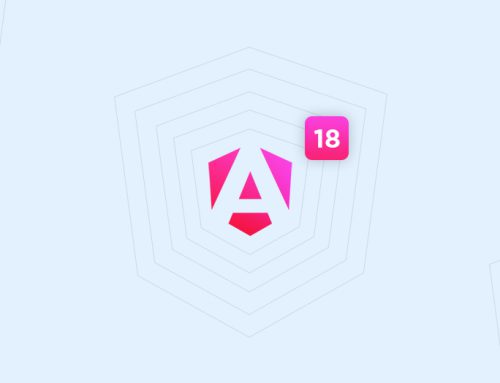Table of Contents
MongoDB is known for its big releases made all at once every year. Up until Version 4.4, MongoDB followed the same pattern, releasing the entire version in July 2020, investing nearly 270,000 engineering hours, and closing around 5,200 tickets while developing multiple projects in the duration of 12 months. This year for a change, with the release of version 5.0, MongoDB had changed its delivery model, making it more frequent and faster.
MongoDB is one of the most popular database management systems worldwide, thanks to its outstanding features, according to Statista survey 2021. In order to maintain this, it constantly works towards improving, releasing better versions every year. A significant contribution to this is the release of MongoDB 5.0 in July 2021.
MongoDB 5.0 has many new features which will make the database more robust and secure. Through new password encryption and authentication mechanisms, the database is being enhanced for safety. They have also introduced a new mechanism that will simplify the scaling process. This article will describe all the new features in greater detail, so for more information please read to the end.
However, before hopping to the latest changes and features introduced in MongoDB 5.0, let’s set the foundation by acquainting you with the pitfalls of the existing MongoDB version that the latest version 5.0 has addressed.
Pitfalls in the Existing MongoDB Versions
Here are some of the features, the existing MongoDB Versions were unable to perform-
- Minimal support to real-time data analysis.
- There was no support for visualization, online archiving, or historical data coupling.
- There is no support for live data sharing.
- Backward compatibility was required to map the objects to the code.
- Used coupled lifecycles for applications and databases. Therefore, any change to the database code affected the application code as well.
- Followed the “one-way parachute jump” approach for shard keys, which means there was no trial facility.
How MongoDB 5.0 Addressed all the Drawbacks?
MongoDB 5.0 brought in numerous changes with its release, with the focus to improve productivity and extensibility. However, the top 3 were the Time Series Data, Sharded Workloads, and Versioned API.
To know what all these mean to a developer, let’s take a closer look:
-
1. Native Time-series Features- Keep your tabs on the time-sensitive data
MongoDB 5.0 has extended support to the time series data for the applications. As a developer, you can use this feature to include time-based data and filters in your applications. On top of that, the time-series feature facilitates clustered indexing, and window functions to make building and running IoT and financial analytics applications easier and faster.
With the time series feature, MongoDB 5.0 optimizes the schema for high storage efficiency, real-time data analytics, and low latency queries, allowing you can track and store real-time data, like in the case of checking the transaction history.
Some highlights of this feature:
- It significantly reduces index sizes and IO for operations leading to performance gains.
- The overall storage size is reduced.
- Time series data can be managed efficiently throughout its lifecycle, from ingestion, storage, querying, real-time analysis, and visualization down to online archiving or auto-expiration as data ages.
- The same query API can power any workload class.
-
2. Live Resharding- Expand the scope for horizontal scaling of your database
The concept of sharding refers to the process of distributing data across multiple servers. In general, it is challenging to manage huge database systems or applications requiring high throughput on a single server. To address this, MongoDB uses its live resharding method.
With the live resharding feature, MongoDB helps the developers through horizontal scaling of their database by allowing them to share the larger datasets at a time. Along with this, it also liberates the developers from the “one-way parachute jump” problem of the shared key. Hence, unlike the previous versions, you can set your shard key up and change it for the collection of data whenever required.
-
3. Versioned API- No more hassle of backtracking and updates
As MongoDB plans to release its updates every quarter, it becomes difficult for the developers to retest their applications at every release. To address this problem, MongoDB has introduced a new feature called Versioned API.
The Versioned API future proofs your application by decoupling the database lifecycle from the app lifecycle, empowering you to run your database for years. To do this, MongoDB maintains a stable interface between the database and apps. Hence whenever the database releases a new update or you want to add a new feature to your application, you can do it at utter ease, without worrying about retesting your application.
-
4. Deploys Serverless Instances of Atlas- Run your MongoDB 5.0 database anywhere
MongoDB 5.0 offers serverless instances with the help of Atlas- DBaaS provided by MongoDB. The best thing about deploying Atlas is that being a cloud-based database service, you need not scale your infrastructure manually in case of any changes, instead, the database manages everything at its end. Hence, with this, all you need to do is choose a cloud region, build the documents or database and map it to the objects into code
Advantages of Serverless Instances through Atlas
- When you use serverless instances, you do not have to worry about upgrades and backward compatibility.
- With this, you automatically get provided with the appropriate resources for your workload.
- It allows you to access new clusters of MongoDB without worrying about its configuration. configuring them yourself.
-
5. Multi-Cloud Security- Kick off the security threats through client-side field-level encryption
MongoDB 5.0 offers multi-cloud security through client-side field-level encryption. Client-side field-level encryption uses a single key to encrypt and decrypt data within specific data fields.
Along with this, it also employs consistent auditing and certificate rotation as well as data privacy controls to manage the multi-cloud cluster security. This way it protects all types of data i.e. data-in-motion, present in-memory, and at-rest.
MongoDB 5.0 is constructed with the idea of eliminating any kind of interruptions to the application due to the database, instead, you can run your application wherever you want.
Want to Harness the Power of MongoDB 5.0 in your Application?
We hope you enjoyed reading our article on MongoDB 5.0.
MongoDB is a fully-featured, open-source NoSQL database that has now become more versatile with the release of MongoDB 5.0. As mentioned in the article, MongoDB 5.0 is packed with some amazing features that make database management more efficient, easier, and more secure.
If you’re currently running an earlier version of MongoDB, it’s time to consider upgrading. MongoDB 5.0 comes with a number of new features that can improve the performance and capabilities of your application.
Regardless of how you prefer to upgrade your existing database or want to migrate to MongoDB, it is advisable to hire a professional MongoDB development team.
Having extensive experience with database development and migration projects, our development team can assist you in deploying MongoDB 5.0 in your application efficiently.


























Leave A Comment